Our ESD statement
Troppo are committed to Environmentally Sustainable Development — responsible architecture.
This begins with an appreciation of Place…
Step 1, respond to climate and the local setting:
Step 2, think dynamic, think 'adjustable skins'
And so, connect the indoors with the out (or should it be the outdoors with the in?)
And thereby, respond to the morning, the evening, the season, the heat, the cold, the sun, the rain - the moment that will never pass again.
Designing for climate and seasonality naturally leads to passive thermal design for heating and cooling. A passive system can be supplemented by energy efficient mechanical systems. Energy efficiency will be affected by the nature of building planning in regard to:
aggregation of spaces
zoning control
Selection of a supplementary energy source must holistically consider the energy source production costs in terms of extraction, transport, infrastructure cost and maintenance, production energy consumption and environmental pollution. Renewable energy systems - eg. solar/ wind generated power or direct solar heating - are optimal.
Designing of a building must reach out beyond the building to embrace all of the site and adjacent areas. This whole-of-site approach will then by definition prompt consideration of
ecologically sound waste management/ recycling systems
water collection systems
ecologically responsive stormwater management systems
And a whole-of-site approach will also lead to the closer consideration what can best be done outdoors, or semi-outdoors, rather than in enclosed (and building consumptive) space. In this way we might come to build less. And in an ESD sense, Less is More.
Materials employed in a project must be selected by reference to characteristics of their:
embodied energy content
environmental impacts in extraction/ production
transportation/ handling impacts
waste/ off-cuts-usability
strength/ weight ratio
appropriateness for a given application
need for preservative treatment/ finishes
durability
low impact maintainability
recyclability
These are considerations of whole-of-life costing.
Timber is a difficult and special case. Troppo support ecologically-sound forestry techniques. This includes the proper management of native forests, and plantation of locally native species. We do not support the continuation of exotic pine plantations on the basis of the low quality of the timber, its need for chemical treatment, and the degrading effect of such forest on the water table, soil quality and animal habitat. This said, whilst they're there, they must be used as effectively as possible. Milling should maximise use of the tree, and where possible employ natural seasoning techniques. Select timbers for a nil or minimal finish result.
Where possible use local native timbers from a verifiable sound source. Imported timbers if used should be checked for the social and environmental impacts of their forestry source: a more difficult task.
And in the big picture, strive for:
a refined and clever structural design
simplified constructional detailing
identifying elements suited to prefabrication
These approaches will produce a consequent reduction in the amount of material in a building - and concomitant will be a reduction in the impacts of wastage, transport and extraction/ production. Again, Less is More.
Finally, remember building is a verb - architecture is not merely about 'object'. Thinking about building as a verb sets one down the path of community involvement, as well as the opportunity to set up economic activity (plant, skills, resource development) that may go beyond the life of a building project itself.
The act of building, when mindful of its human purpose and process, can also help sustain a community's social and cultural fabric.
Troppo are the first (and currently the only) Australian recipients of the LOCUS Foundation Global Award for Sustainable Architecture - Awarded to them in 2010.





